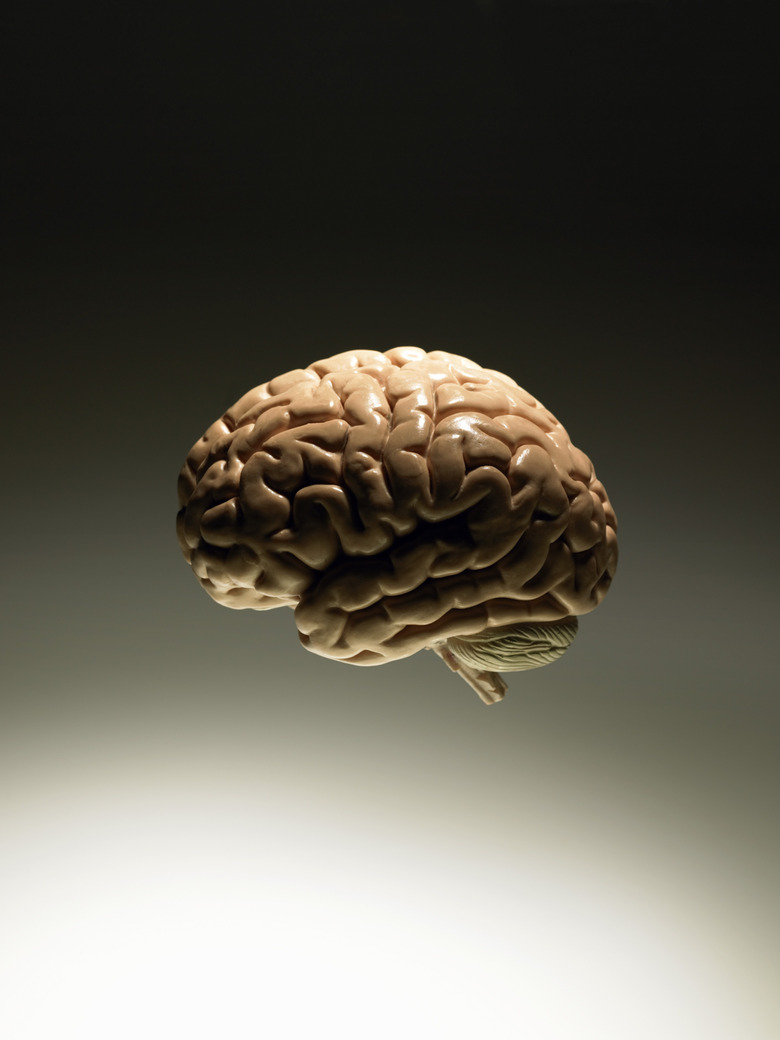The Conductivity Of Nerve Cells In The Central Nervous System
The nervous system is the wiring that coordinates how your body runs. Nerves register stimuli like touch, light, smell and sound and send impulses to the brain for processing. The brain sorts and stores information and sends signals back to the body to control life processes and movements. Signals travel quickly through the nervous system, and the ability of nerves to transmit impulses is called conductivity.
The Central Nervous System
The Central Nervous System
The nervous system runs throughout the body, but the central nervous system is the processing center of the body. The central nervous system is made up of the brain and spinal cord. It is responsible for coordinating voluntary and involuntary body functions and processing incoming information. In a way, the central nervous system is like a giant living computer. Signals, or impulses, travel within the central nervous system and between the central nervous system and the body.
The Neuron
The Neuron
The basic cell of the nervous system is the neuron, and the structure of the neuron is key to the movement of impulses throughout the nervous system. The cell has a main body and tentacle-like projections that reach out to other cells. The points where neurons intersect are called synapses. Dendrites are projections that receive information from other nerve cells. Axons, also called nerve fibers, are projections up to 1 meter (3.3 feet) long that transmit information to other nerves. Outside the central nervous system neurons can also transmit information to and receive information from other tissues.
The Action Potential
The Action Potential
When a signal travels within a nerve, it is called an action potential. The nerve cell pumps positive sodium ions out of the cell, creating a negative charge inside the cell. As the cell is stimulated and an action potential starts, channels open up and sodium ions enter the cell. The channels open in a wave down the axon until the impulse reaches the end of the cell. The axons are wrapped in a protective coating of myelin that acts like an electrical insulator, speeding the impulse along. All neurons in the central nervous system are myelin-coated, although some in the peripheral nervous system are not.
Transmission Between Neurons
Transmission Between Neurons
When the action potential hits the end of one nerve, the signal must move across the barrier to another cell at the synapse. At the end of the axon, the action potential triggers the release of neurotransmitters such as dopamine and adrenaline. The neurotransmitters float across the tiny juncture between cells until they hit the dendrite of the next cell, triggering another impulse and moving the signal down the line. Conductivity may seem like a slow process, but signals can travel up to 112 meters per second (250 miles per hour).
Cite This Article
MLA
Becker, Andrea. "The Conductivity Of Nerve Cells In The Central Nervous System" sciencing.com, https://www.sciencing.com/conductivity-nerve-cells-central-nervous-system-22283/. 24 April 2017.
APA
Becker, Andrea. (2017, April 24). The Conductivity Of Nerve Cells In The Central Nervous System. sciencing.com. Retrieved from https://www.sciencing.com/conductivity-nerve-cells-central-nervous-system-22283/
Chicago
Becker, Andrea. The Conductivity Of Nerve Cells In The Central Nervous System last modified March 24, 2022. https://www.sciencing.com/conductivity-nerve-cells-central-nervous-system-22283/
